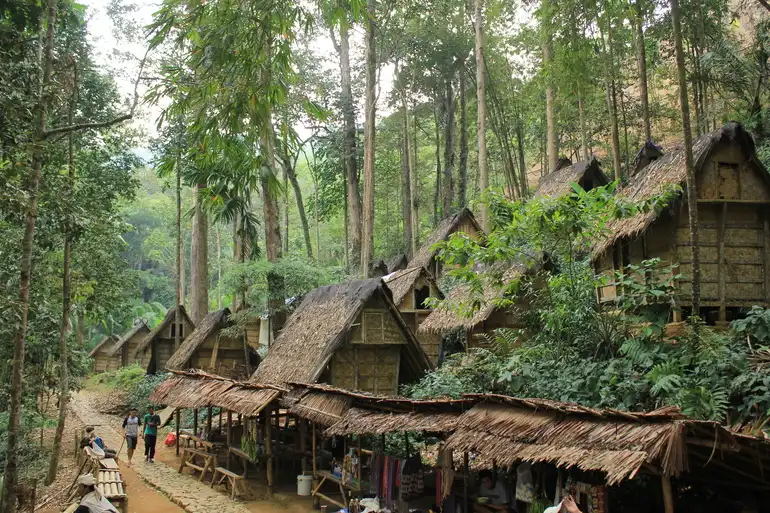
Are there people in Indonesia remaining to live off of technology in these modern times? There sure is! And they’re known as the Baduy.
The Baduy is an Indonesian indigenous group that strongly maintains local wisdom while living in harmony with nature. They’re based in the Kendeng Mountains, Kanekes Village, Leuwidamar, Lebak, Banten. Naturally, I embarked on a voyage to the reversion of life.
My expedition to revel back in simplicity commenced when the world stirred gently under the sun’s soft radiance. Jakarta was in my favourite state, as still as the skyscrapers withstanding wind, gravity, and other forces. The drowsy gaze of my voyager crew sparkled in wonder.
Traces of the Baduy life are relatively scarce. Sure, getting hold of their honey in the metropolitan area is plausible. Merely a portion of their population has stepped beyond the verdant hills of their home, though. So, what else lies behind the Baduy’s shrouded enigma?
Perhaps their mystery is what makes them fascinating to learn about, I reckoned during the two-hour rail trip from Tanah Abang Station to Rangkasbitung Station via the commuter train (KRL). Our guide ignited the engine as the voyage continued to the Baduy area entrance for another hour or so.
“Remember, technology usage is forbidden. But I’ll remind you once again before we enter the Baduy Dalam territory,” he conveyed.
The quiet hum of the midday promised peace while the rush of outside life gently swivelled. I was promised culture with a mini trek - the reality was three to four hours amidst the wild echoes of the tropical forest, hanging in the air. The soul of creation was loud in this green garden of Eden; the birds’ angelic notes hummed, insects churred left and right, foot by foot shuffled through detritus, and leaves rustled around trunks. Indeed, a charming side of Banten none of us had ever endured.
“What did I get myself into?” I asked myself. I could barely contain flustering in the first hour due to the humidity. Nonetheless, I managed to swallow my fussiness soon enough, squeezing in cheeky chuckles as we collectively basked in nature’s galore.
A born-and-raised Baduy man led and accompanied us. He normally treks for half an hour or even less - without shoes! But this charming man in black apparel comforted our struggling poise oh-so-effortlessly.
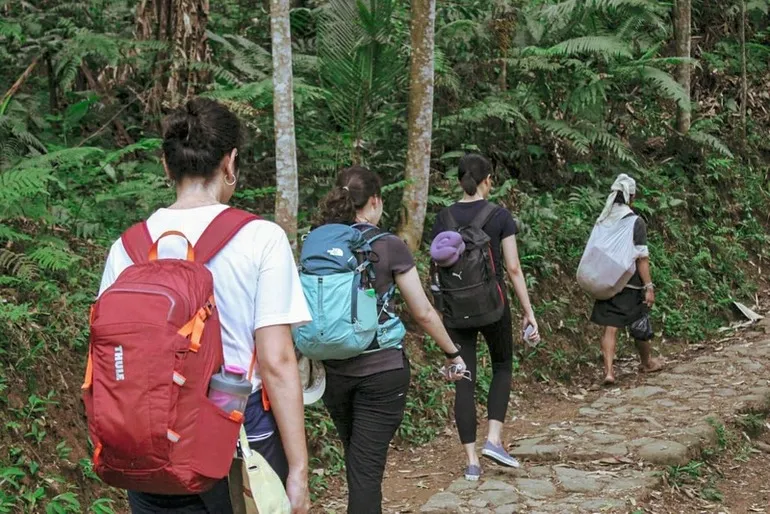
The Baduy people are one with their surroundings. They cultivate their food by harvesting crops, they wear linen-esque clothing – basically, they benefit from whatever they can find in nature to fulfil their daily needs. It’s evident from the individuals we greeted along our trek and their firm infrastructure.
“The Baduy tribe consists of two groups: Baduy Luar and Baduy Dalam. Many people mistakenly believe that the Baduy Dalam and Baduy Luar are the same, but they have clear differences,” detailed the bapak.
Baduy Luar lives in the outer area, encircling the Baduy Dalam region. They tend to be more open to receiving guests and tourists, reflected by their plain black or dark blue apparel that signifies openness to the outside world, usually handmade from woven fabric.
They’re also familiar with outside cultures since they engage in activities. Travelling beyond their homeland to sell natural honey to cities is routinely practised. This is in honour of Seba Baduy, an annual ritual when the Baduy people walk to the city to deliver agricultural produce as a tribute to the local government.
But get this: when it comes to travelling, they walk - they do not ride on a public transportation mode, nor even a personal car. It goes against their belief of respecting nature, Bapak informed us.
A striking similarity between the two groups is their great value to nature; thus, harming the environment is off limits. We strolled by the Baduy traditional houses facing either north or south, adjusted to the contours of the land to avoid excessive levelling of the ground. Hence, their sanctuaries are built on stilts with the space beneath serving as natural ventilation and storage, sourced from natural materials such as bamboo, wood, and kirai leaf roofs bound by rattan ropes and wooden pegs. Even wood and bamboo are taken in moderation and meticulously.
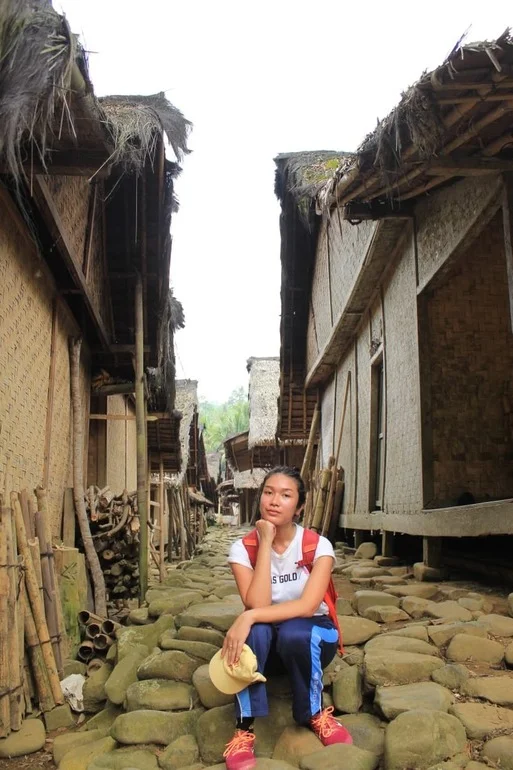
Trekking along the slopes, plantations, and rivers behind the hills of Baduy Luar over 12 kilometres finally led us to our cue to start living just as the locals do. The bridge made of tree root bindings and additional bamboo at the bottom over the Cisimeut River acts as a border from Baduy Dalam.
“Now, please switch off your phones,” said the guide. Radios, speakers, tablets, laptops, and other technological devices are included. No problem, but I just had to ask, “Why is technology in the Baduy Dalam area prohibited?”
“To preserve our culture and traditions,” answered the bapak.
This Root Bridge was truly a testament to the remarkable way the Baduy Dalam tribe harmonises with nature. Arriving in Baduy Dalam was impressively soothing. The houses in this settlement were simpler as opposed to their counterpart. Bapak led us to his home, where his family, donning all-white clothing without buttons (which represents purity), greeted us with a meal of rice, fried tempeh, fried egg, vegetables, and sambal they had previously harvested.
Their identity and philosophy of simplicity and closeness to nature were mirrored in the way they prepare their daily meals, too. Their main food is dryland rice, which, of course, is grown by themselves. Other typical dishes they savour include pepes ikan (grilled fish wrapped in banana leaves), ketan bakar bambu (bamboo-grilled sticky rice, called leumeung), and cassava leaf stew. A variety of tubers from their own gardens are consumed as well, such as gadung, cassava, and taro, which are deemed as additional carbohydrate sources to help sustain their bodies during physically demanding activities, i.e. long-distance walking.
Processed foods, preservatives, and artificial sweeteners are prudently avoided as the Baduy are meticulous with their eating habits. A traditional drink commonly consumed is boiled water concocted from certain leaves believed to promote better health.
The Baduy Dalam, moreover, is much more reserved and adheres strictly to the rules that have been passed down through generations. Despite welcoming tourists, not all areas are open to outsiders, especially those beyond the Baduy community.
The river in the village is divided into three sections, namely to do number two, to pee, and to bathe. Refraining from bringing soaps, detergents, softeners, shampoo, toothpastes, etc., was highlighted because such chemical-based products are considered to damage the environment. We adhered to this restriction during our little trip to the river when the only channels of light were emitted by the moon and our headlamps. Our bladders were reaching explosion whilst we contemplated which portion of the river we could peacefully release.
Bare feet of all walks of life in plain white and blue clothing, with no buttons and collars attached, dashed along the village. We saw fireflies, we heard hums of insects and gusts of wind. God knows what the two of us heard screeching outside the wooden walls that night. We could only giggle until bedtime.
Tourists are also against snapping photos of the area or the Baduy people without permission due to their belief, which opposes the use of technology and highly values and protects nature. Carry cash to splurge on their handmade woven cloths, bags, necklaces, trinkets, and so on. The Baduy Dalam tribe only communicates using their native language, Sundanese, in the air, yet Bapak kindly translated for us.
Time to head home. We opted for a shorter route traversing a different scene. Some days it feels as if humanity will squabble until the last of the tropical forest has been sold as trinkets in upmarket boutiques. Not for the Baduy. We were discouraged from littering in the area, especially throwing trash into rivers. We disposed of our plastic waste once we left the Baduy area.
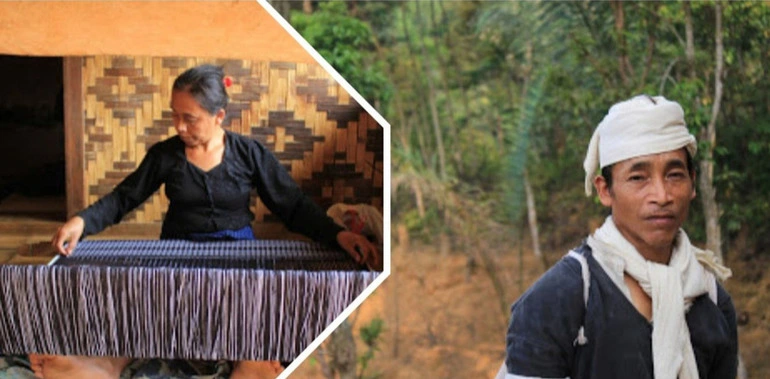
Embracing the daily routines of the Baduy Dalam was fascinating. Besides, they’re some of the kindest people I’ve ever met. They let strangers stay in their homes and share their food. Unless they practice the Kawalu tradition, where they isolate themselves from visitors for three months to engage in worship and meditation. Visitors are prohibited from entering the area and are only allowed to visit Baduy Luar as a form of respect to their ancestors, and it is one of the ways they preserve the sanctity of their customs.
To say the people of Baduy live in the dark ages is inaccurate and, truthfully, grim. They’re simply preserving their cultural beliefs. This voyage entailed a glimpse of the simple life - the Indonesian way.
Major respect for the Baduy people for solidly grasping their traditional way of life, and of course, having the strength and stamina to roam around despite the blazing sun and humidity!



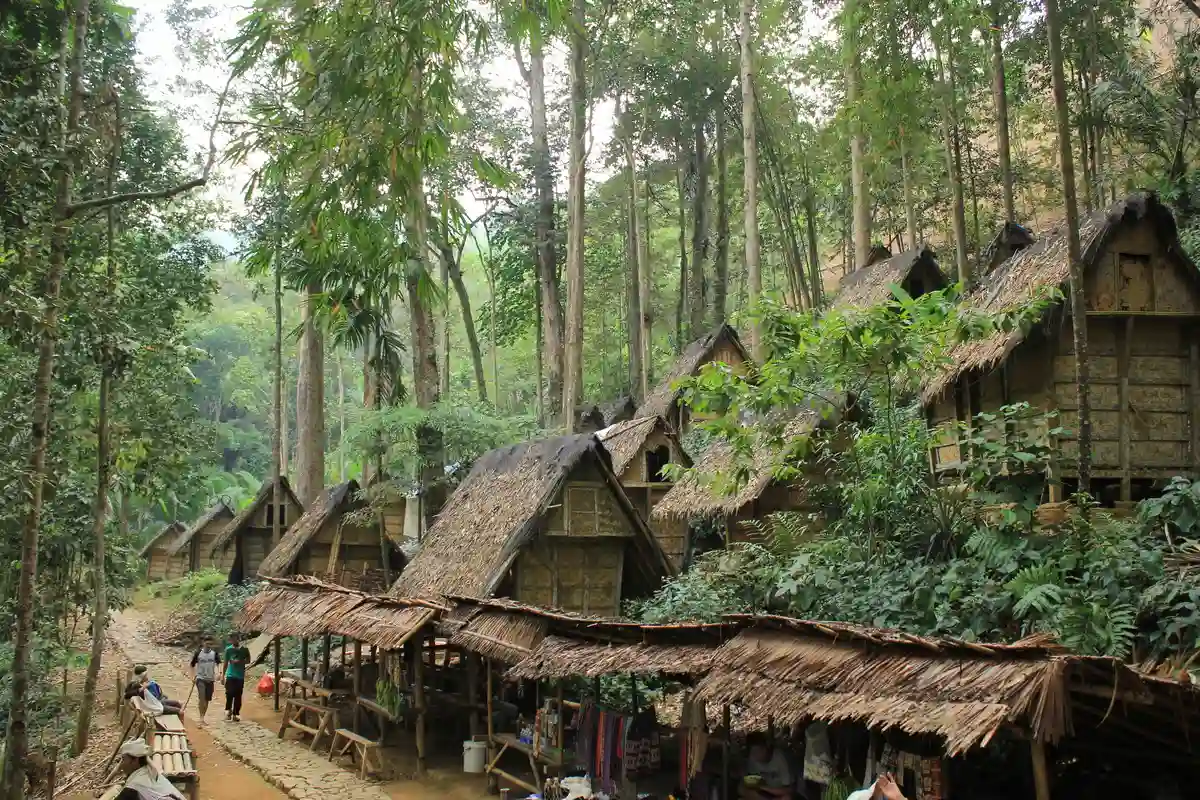
 Mirella Pandjaitan
Mirella Pandjaitan
 Apr 28, 2025
Apr 28, 2025